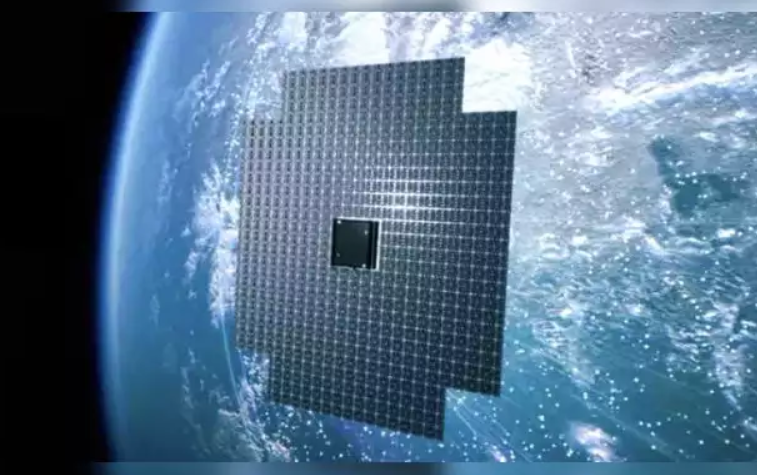Brightest Object in Night Sky Revealed: AST SpaceMobile’s BlueWalker 3
Scientists with the International Astronomical Union (IAU) recently made a startling announcement: one of the brightest objects visible in the night sky is not a star or planet but the BlueWalker 3 prototype satellite, developed by AST SpaceMobile. This unprecedented brightness has sparked concerns among astronomers and stargazers alike, raising questions about the future of our night skies and its impact on scientific observations.
Bright Star in Orbit
BlueWalker 3 is part of AST SpaceMobile’s ambitious 5G communications system, designed to connect everyday smartphones globally. Its remarkable brightness results from a massive phased-array antenna, making it appear like a giant mirror reflecting sunlight from Earth’s perspective. Launched in September 2022, BlueWalker 3 is considered the largest commercial antenna system ever deployed in low-Earth orbit.
Potential Night Sky Litter
AST SpaceMobile envisions deploying around 90 similar satellites, forming a satellite constellation, though far fewer than other projects that require thousands of satellites for coverage. However, this development raises concerns about an overcrowded night sky and its impact on astronomy.
Astronomical Implications
Excessive artificial brightness in the sky disrupts astronomical observations, particularly during twilight hours when the sun is just below the horizon. These observations are essential for tracking near-Earth objects and providing early warnings of potential asteroid collisions, crucial for Earth’s safety.
The Brightest of All
BlueWalker 3’s brightness surpasses other satellite constellations, including SpaceX’s Starlink and OneWeb. While coordination efforts with organizations like the National Science Foundation (NSF) have made progress in reducing satellite brightness, regulatory frameworks need further development to address this issue.
Mitigation Strategies
AST SpaceMobile is actively working to address brightness concerns. They plan to collaborate with NASA and astronomy groups, position gateway antennas away from radio-quiet zones vital for astronomy, employ roll-tilting maneuvers to reduce apparent magnitude, and equip next-generation satellites with anti-reflective materials. Despite these efforts, more stringent regulations and global coordination are required.
Future Challenges and Solutions
Astronomers are developing tools like image analysis pipelines and telescope scheduling algorithms to mitigate the effects of satellite brightness. However, the ultimate solution lies in balancing satellite deployment with preserving dark skies. Suggestions include allowing consumers to choose satellite services based on their impact on the night sky and considering geostationary orbits for satellite constellations to minimize brightness.
Month: Current Affairs - October, 2023
Category: Science & Technology Current Affairs






